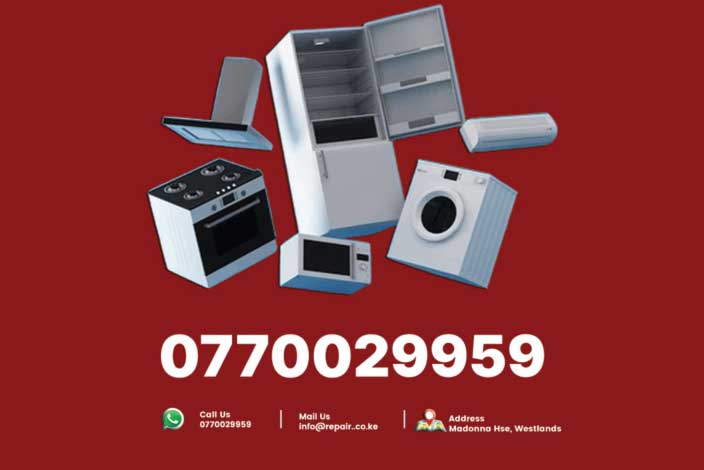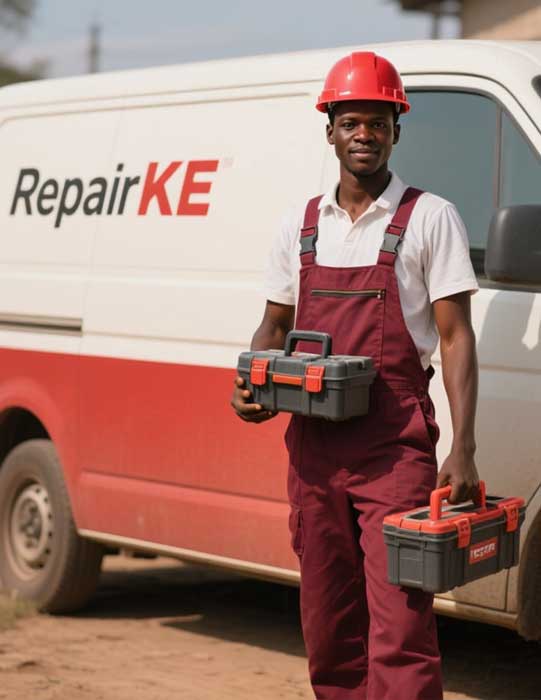Fully Automatic Washing Machine, How They Look & Function
Fully automatic washing machines are popular in Kenya for their ease of use. They handle washing, rinsing, and spinning in one cycle. No manual input is needed after setting the program. Repair.co.ke explains how these machines look and work.
Appearance of Fully Automatic Washing Machines
Fully automatic washing machines come in two main types: top-load and front-load. Top-load machines have a lid on top. You open it to put clothes in a vertical drum. Front-load machines have a door on the front. Clothes go into a horizontal drum. Both types have a control panel with buttons or a digital display. The panel shows options like wash cycle, water temperature, and spin speed.
Top-load machines are taller and narrower. They fit in small spaces. Front-load machines are wider and often stackable with dryers. Most machines are white, silver, or black. Some have sleek designs with LED screens. Sizes vary, but most are 60-70 cm wide and 80-120 cm tall. Capacities range from 6 kg to 12 kg for home use in Kenya.
The drum inside is stainless steel or plastic. It has small holes to let water flow. Top-load machines often have an agitator or impeller in the drum. Agitators are central poles that twist to move clothes. Impellers are low discs that spin to create water currents. Front-load machines use a tumbling action. The drum rotates to lift and drop clothes.
Machines have a detergent drawer or tray. You add detergent, softener, or bleach there. Some models have a water inlet hose at the back. Others have built-in water heaters. A drainage hose removes dirty water. Many machines have a lint filter to catch debris.
How Fully Automatic Washing Machines Work
Fully automatic washing machines run on electricity. They connect to a water supply and drainage system. You load clothes, add detergent, and select a program. The machine does the rest. Here’s how they function.
1. Water Intake
The machine fills the drum with water through the inlet hose. A valve controls the water flow. Sensors detect the water level based on load size. Some machines adjust water volume automatically. Hot or cold water options depend on the model. High-end machines heat water internally for better cleaning.
2. Washing Cycle
The wash cycle starts after water fills the drum. The drum rotates or agitates to mix clothes with water and detergent. Top-load machines use an agitator or impeller to move clothes. Agitators twist back and forth. Impellers spin to create turbulence. Front-load machines tumble clothes by rotating the drum. This lifts clothes and drops them into the soapy water.
Cycle options include normal, heavy, delicate, or quick wash. Each setting changes the drum speed and wash time. Normal cycles last 30-60 minutes. Heavy cycles for dirty clothes take longer. Delicate cycles use gentle movements for soft fabrics. Quick wash is for lightly soiled clothes and takes 15-30 minutes.
3. Rinsing
After washing, the machine drains dirty water through the drainage hose. A pump pushes water out. Fresh water enters for rinsing. The drum spins or agitates to remove detergent from clothes. Some machines rinse multiple times for better results. Sensors ensure enough water is used.
4. Spinning
The spin cycle removes excess water. The drum spins at high speeds, up to 1400 RPM in some models. This pushes water out through the drum’s holes. Clothes come out damp, not soaking wet. Spin speed varies by program. Delicate cycles use lower speeds to protect fabrics.
5. Control System
A microprocessor controls the machine. It manages water intake, drum movement, and cycle timings. Sensors monitor water level, temperature, and load weight. Some machines have smart features. They connect to Wi-Fi or apps. You can start or monitor cycles remotely. Error codes show on the display if something goes wrong.
Common Features
Many fully automatic washing machines have extra features. Add-wash doors let you add clothes during the cycle. Eco modes save water and power. Delay start sets the machine to run later. Child locks prevent kids from changing settings. Some models have steam functions to remove tough stains. Inverter motors are quieter and save energy.
Maintenance Tips from Repair.co.ke
Clean the drum monthly to remove residue. Use a washing machine cleaner or vinegar. Check the lint filter regularly. Remove debris to prevent clogs. Inspect hoses for leaks or cracks. Avoid overloading the machine. It strains the motor and drum. Use the right detergent amount to prevent buildup.
Repair.co.ke Services
Repair.co.ke fixes fully automatic washing machines in Kenya. Common issues include water leaks, drum not spinning, or error codes. Our technicians diagnose problems like faulty valves, broken belts, or damaged motors. We use genuine parts for repairs. Regular maintenance prevents breakdowns. Contact Repair.co.ke for fast, reliable service in Nairobi and beyond.






